The months June, July and August 1888 was perhaps the most eventful time in the railway history of Bulgaria after the country’s liberation from Ottoman rule in 1878. The Tsaribrod-Sofia-Vakarel railway line was commissioned for domestic exploitation on 23 June, 1888. On 3 July, the Ottoman officials were removed from the Belovo-Vakarel railway line and it went into the hands of the Bulgarian authorities and Bulgarian staff. On 10 August the first railway line in the country – the Russe-Varna line – also came under the control of the Bulgarian authorities. That was how, at the end of 1888, the Bulgarian State Railways, BDZ, were founded. 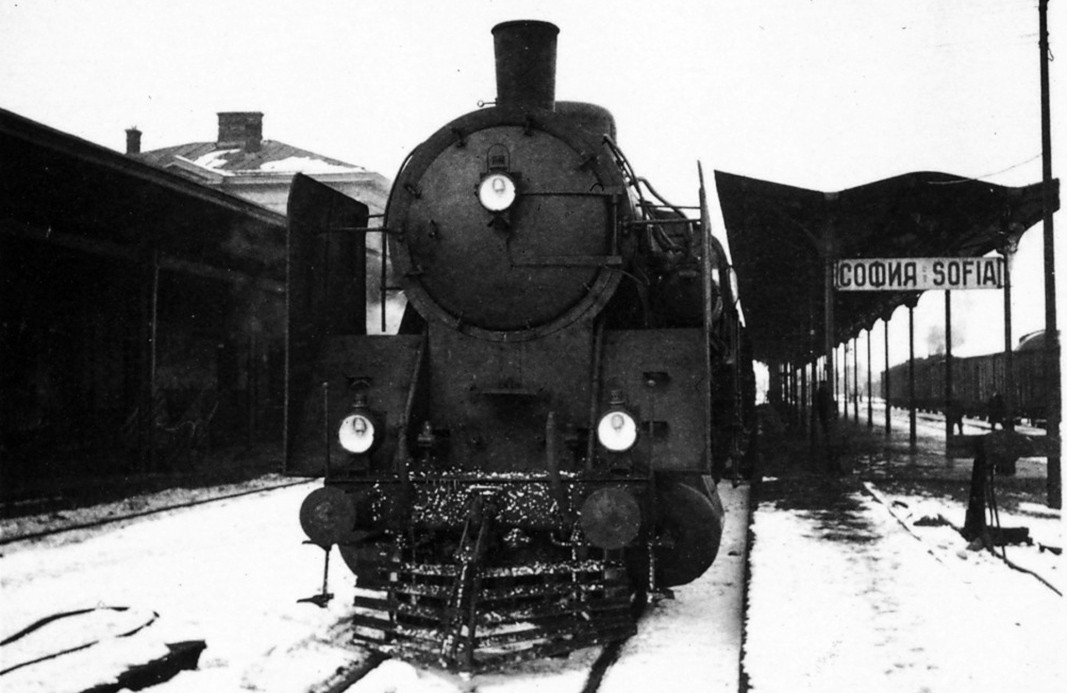
But the most notable event of that year took place on 1 August – an international train travelled along the Belovo-Tsaribrod line, and it was… the Orient Express, welcomed with pomp and circumstance at all major stations but most notably at the Central Railway Station in Sofia – the most impressive train station in Bulgaria, but also in the Balkans - which was officially opened on that same day.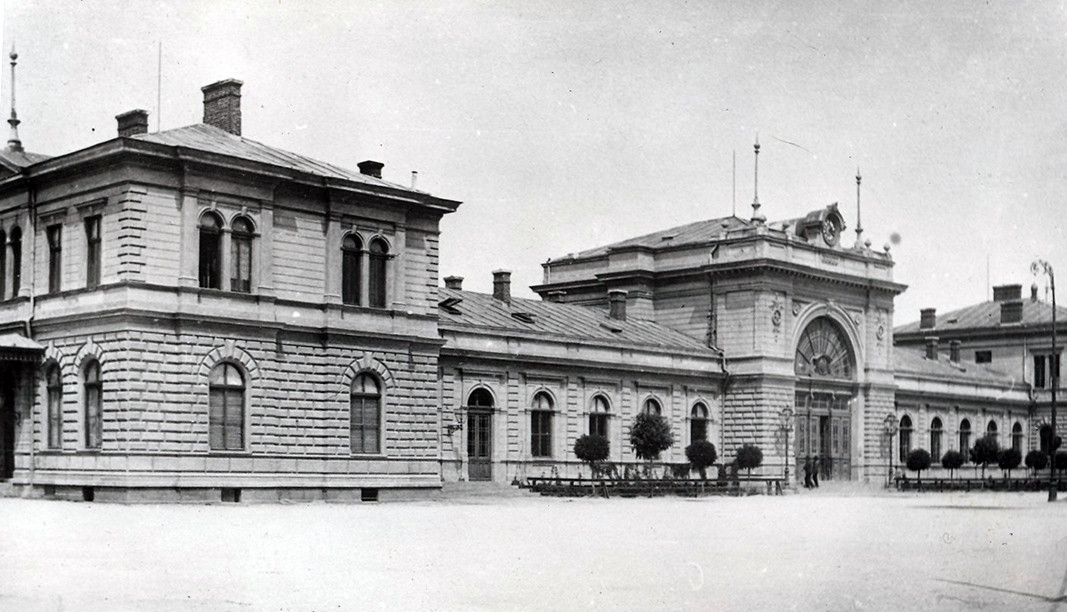
“It is part of the biggest and most important railway project of the then young Bulgarian state,” explains Ivan Gogev, consultant at the National Railway Infrastructure company and author of books and articles on railway construction and engineering anthropology. 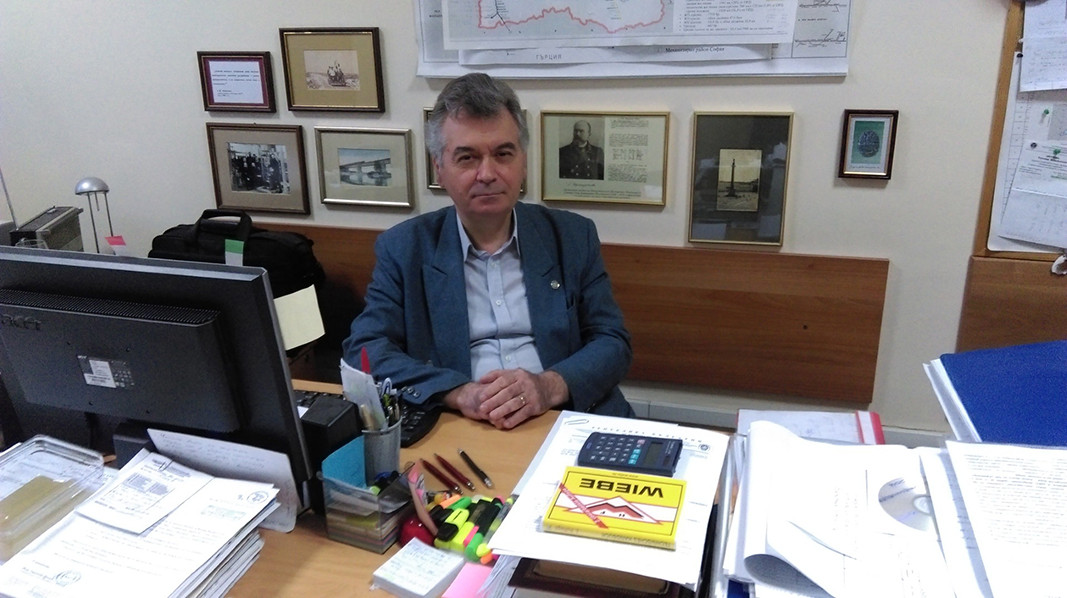
“Italian Renaissance elements were used in the interior, and in the exterior. The station was really impressive. For dozens of years after it opened, it continued to be a magnet, a gateway to Sofia but also to Bulgaria, used by royalty, as well as by all kinds of celebrities – Bulgarian and foreign. On their days off, the public liked to come to the station to marvel at this architectural gem. They would buy a platform ticket (access to the station was not free in those days), and would marvel at the ornamentation, the platforms, the crowds, the colours all around, the powerful, fast and elegant steam engines, the passenger trains. Many of them dreamed of boarding these trains and travelling – but for many it was a dream that would never come true.”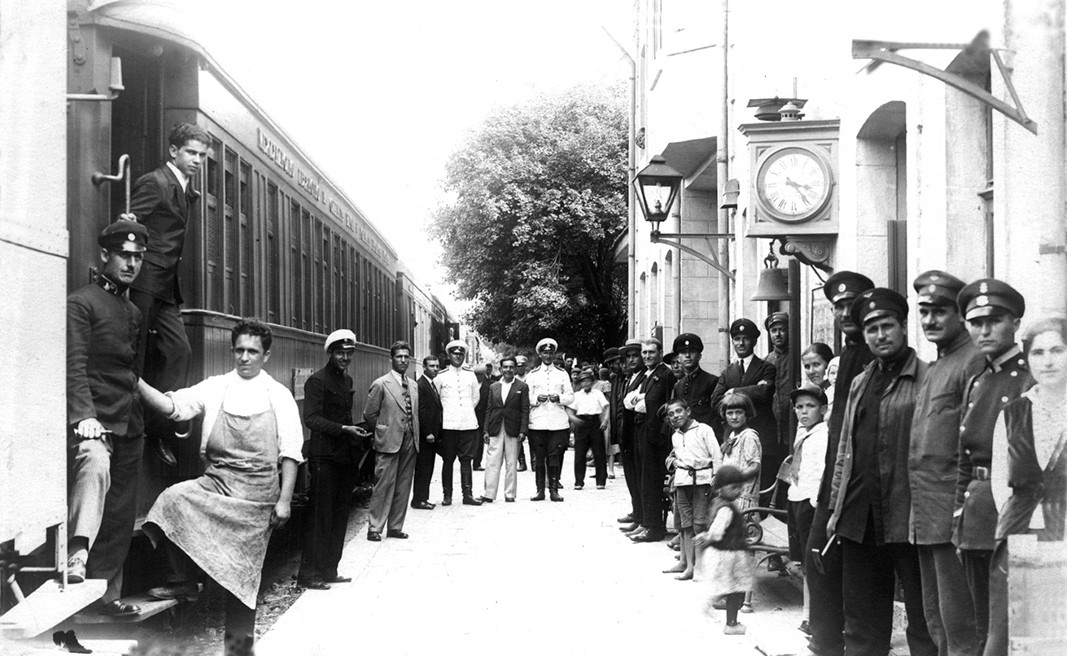
Today, anyone going to the Central Railway Station in Sofia can take a trip back in time and see the huge art installation called “Wheels of time” on the second floor by Prof. Boyan Dobrev who lectures in composition at the National Academy of Art.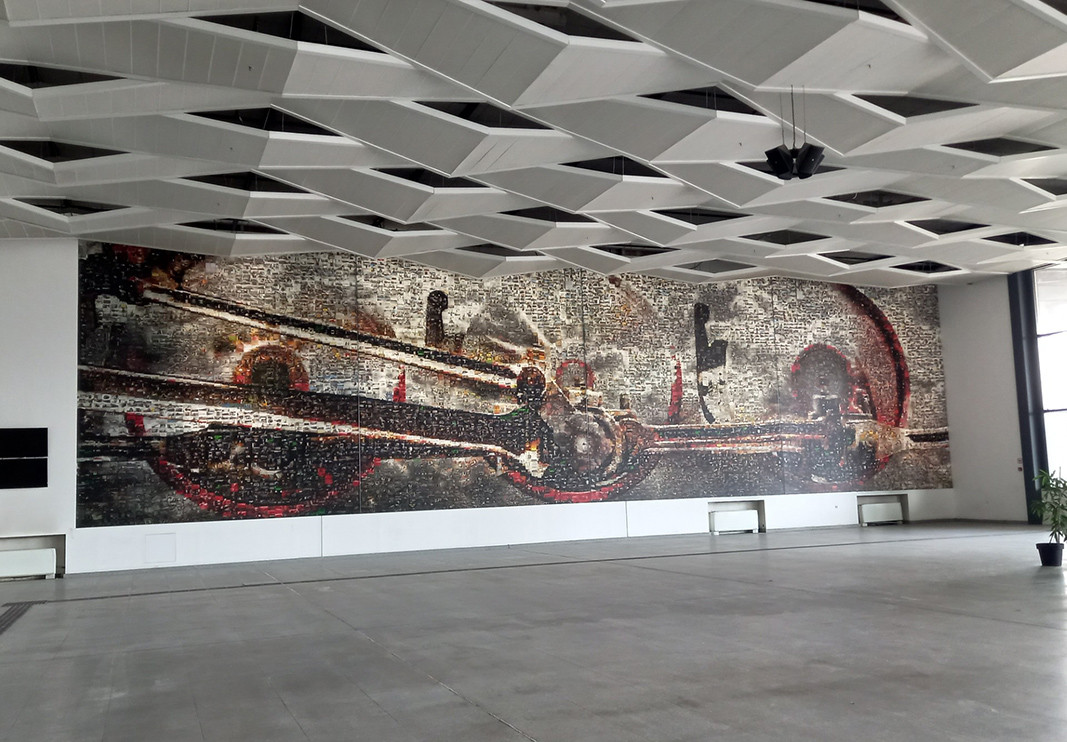
“The mural is a fascinating and original work,” Ivan Gogev says. “Looked at from a distance it depicts the propulsion of a steam engine’s wheels. From up close it is made up of innumerable family photographs of railway staff, the old rolling stock, locomotive plates and many other things connected with the history of Bulgaria’s railways.”

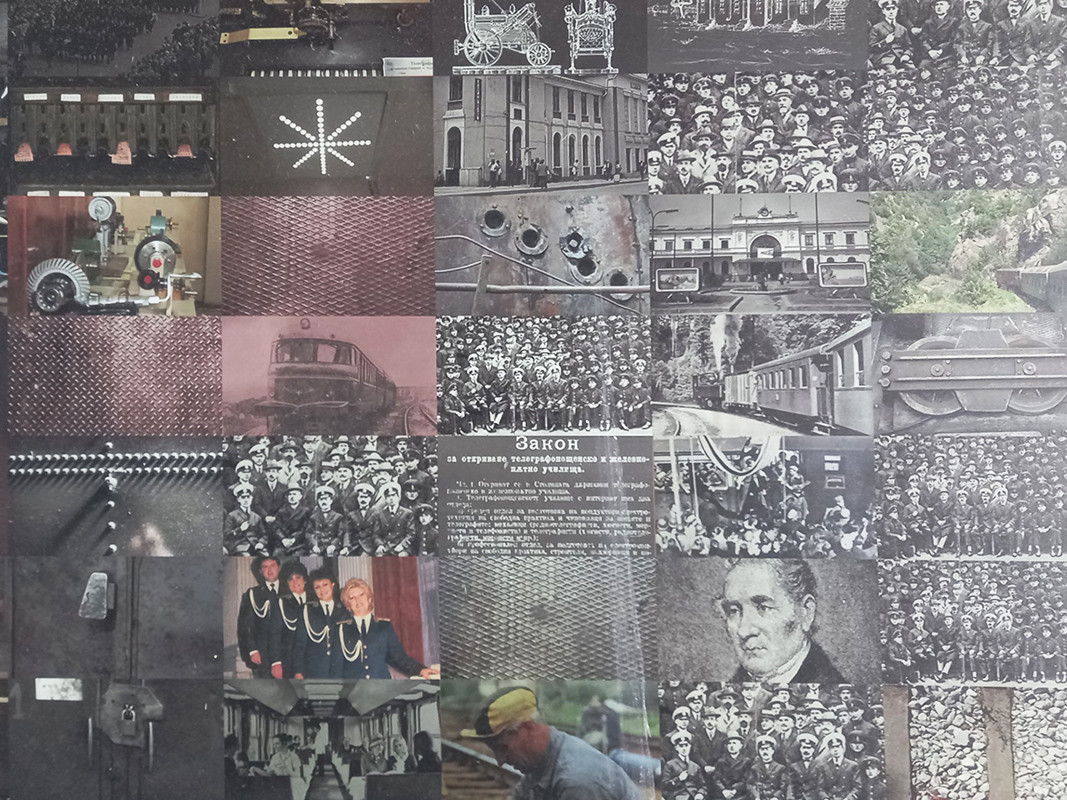
Railway workers’ day in Bulgaria falls on the first Sunday of August.
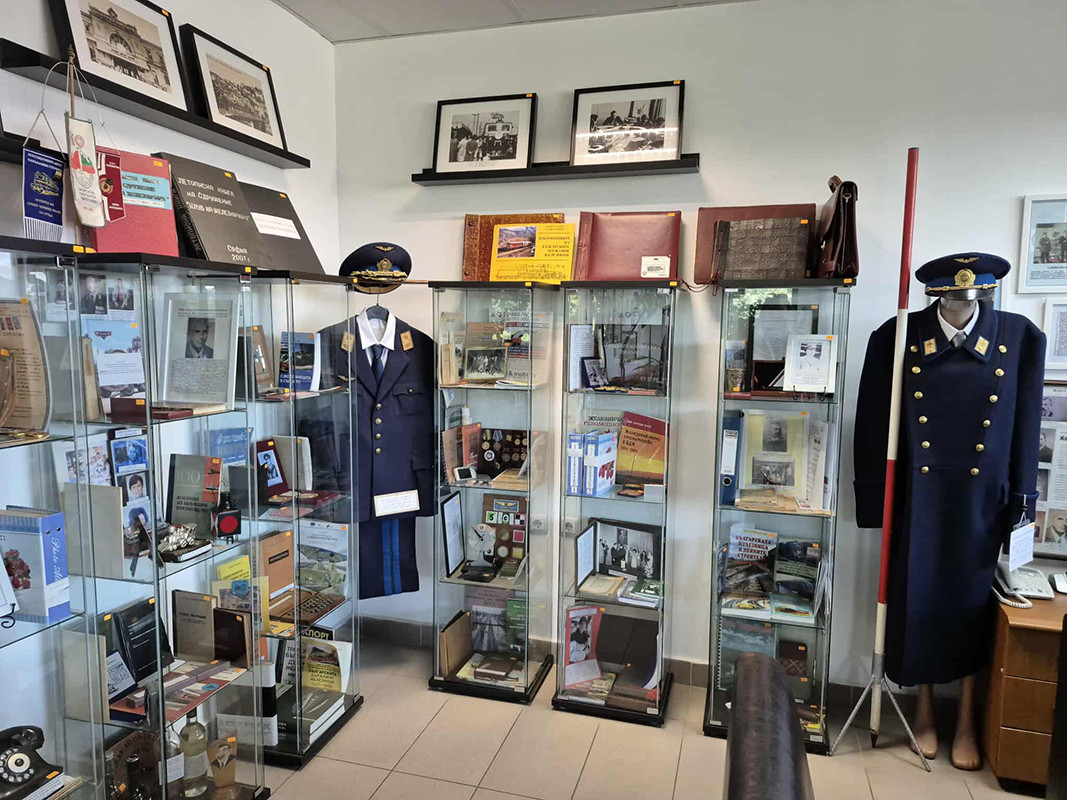
“At the Railway Workers Club, a lot of effort was invested, in the past 10 years, to fashion a space that is really interesting to visitors,” Ivan Gogev says further. “There is a library there with specialized literature, lots of photographs of railway workers, there are small-scale models, plates, signs, including signs from the manufacturing plants, uniforms from 40-50 years ago.”
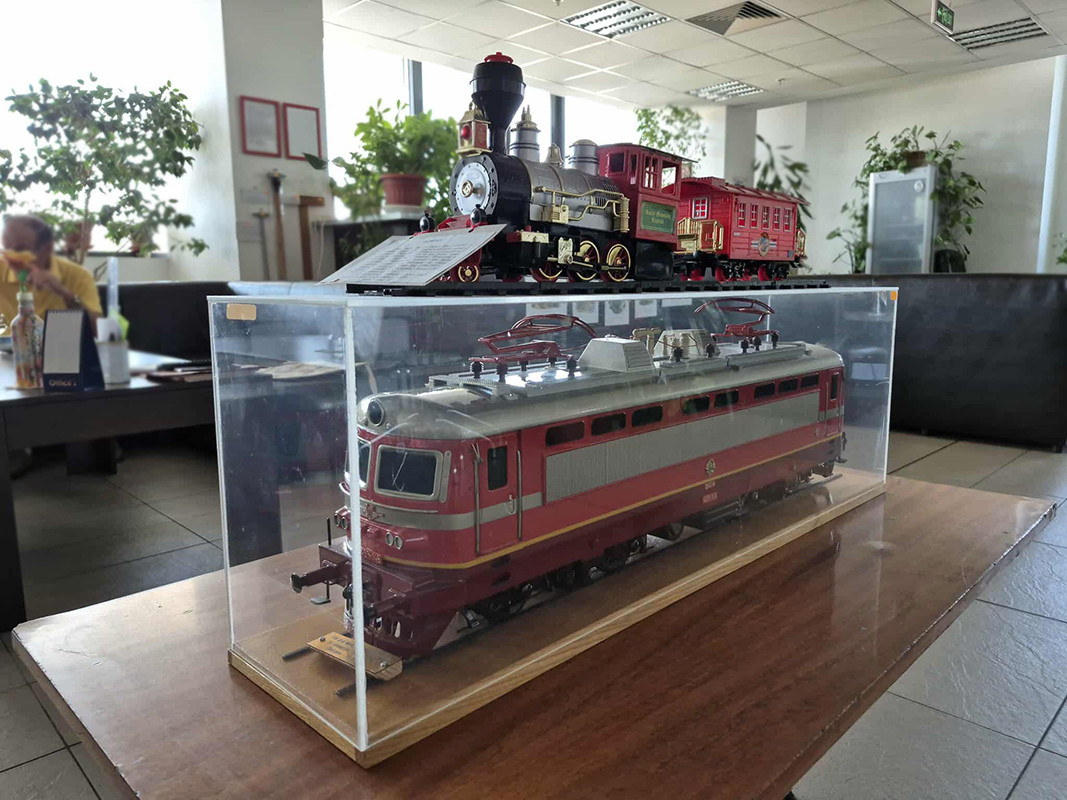
There is one more place where visitors to the Central Railway Station can trace its history – the museum display case on the first floor.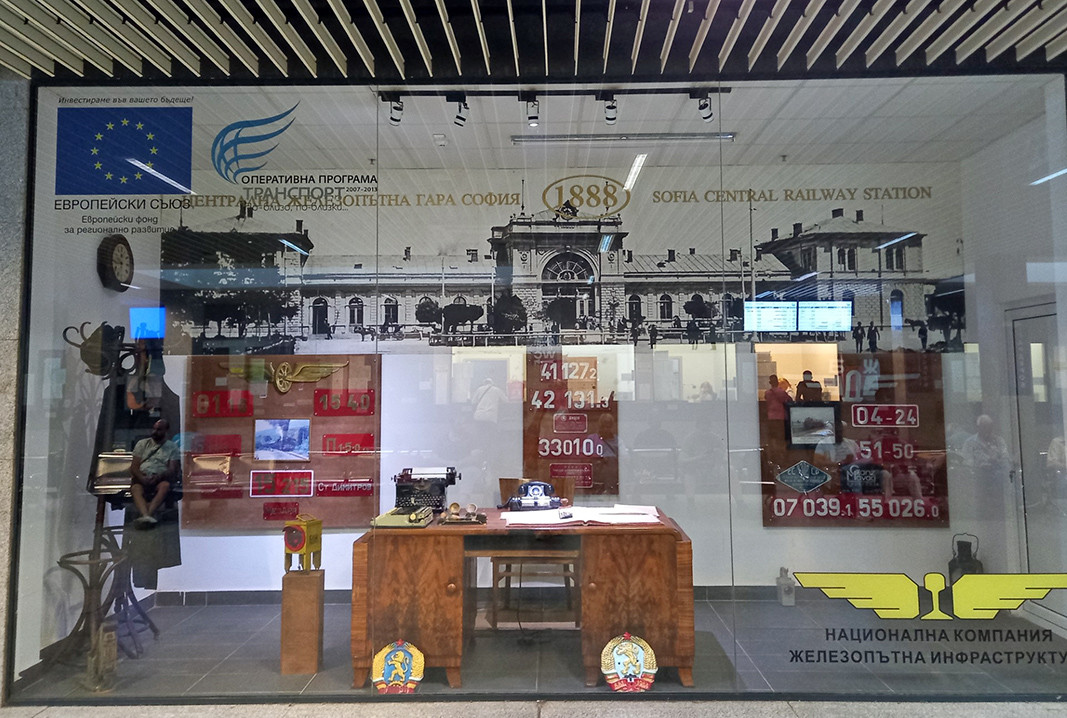
“There you can see an original desk used by the administration in the 1930s, a lot of plates from locomotives long decommissioned, signaling devices, an old uniform, etc.,” says Ivan Gogev.
Interestingly, the first locomotives running along Bulgaria’s railways in the early 20th century had names. Seven locomotives for passenger trains were named after Bulgarian rivers – Yantra, Tundzha, Iskar and Vit – or were given names connected with the dynastic tradition then being established – Tsar, Ferdinand, Coburg. Seven of the locomotives for freight trains were named after Bulgarian mountains.
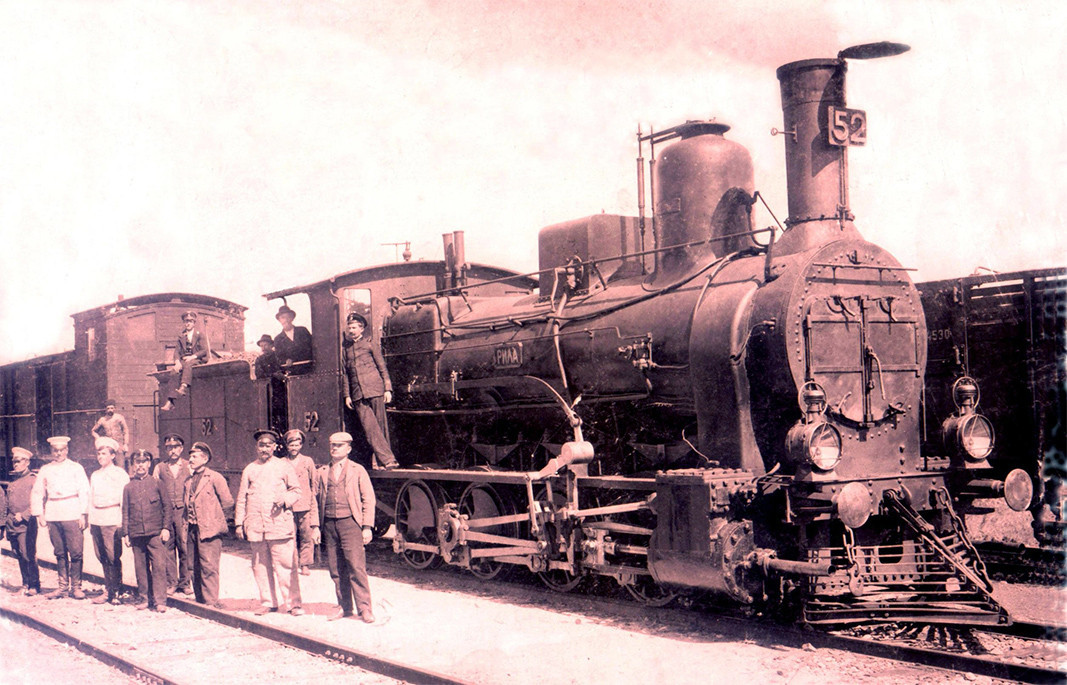
“For many years Bulgaria’s railways played a prominent role in the Balkans. We have unique technical and technological solutions any railway administration would be proud of,” Ivan Gogev says.
Translated and posted by Milena Daynova
Photos courtesy of engineer Dimitar Deyanov, Stefan Stoichkov and Ivan Gogev, Desislava Semkovska, BDZ
The Bulgarian minority in Romania marked a significant event with the official opening of the Bulgarian Inn in the village of Izvoarele (Hanul Bilgarilor), Teleorman County (Southern Romania)- a locality with Bulgarian roots dating back over 200 years...
The 14th edition of DiVino.Taste, Bulgaria’s leading forum for wines and winemakers, will take place from 28 to 30 November at the Inter Expo Centre in Sofia. Over 80 producers from all wine regions will participate, offering tastings of around 600 of the..
Minutes before the second and final reading, at the parliamentary budget and finance committee, of the state budget for 2026, the leader of the biggest party represented in parliament GERB Boyko Borissov halted the procedure and sent the draft bill..

+359 2 9336 661
